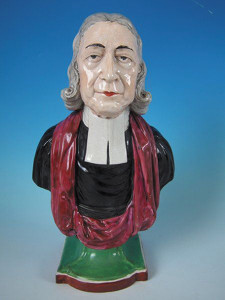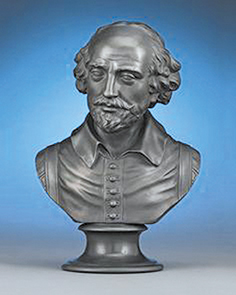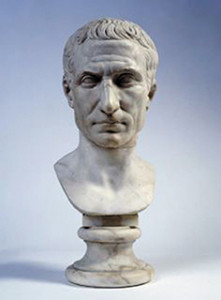There has always been a fascination for portrait busts, that continues. When they come up for auction prices are varied, depending on many factors. Age and subject are the most important. The sculpted heads of Egyptian and Roman rulers have never gone out of fashion. After all who wouldn’t like to display a sculpture supposedly dating to antiquity, the 19th century or even a recent reproduction?
An upcoming Skinner auction of “European Furniture and Decorative Arts are offering a wide variety of 19th century busts made of many materials. Their catalogue is important for would-be collectors not only for the images but estimated prices.
Historically, early Roman busts evolved from the wax death masks of emperors, statesmen and warriors. They were then copied in bronze, marble and terracotta.
Julius Caesar was the most popular and still is with today’s collectors. In Egypt, during the same time period, the most famous bust was Queen Nefertiti, made of painted limestone. Another favorite was the boy King Tut. Both are still favorites as reproductions.
In ancient Greece, busts of deities were fashioned of marble.
During the 17th and 18th century gilt wood carved busts of the saints were made in great quantity. An example is offered at the Skinner auction with an estimate of $800 to $1,000.
 During the 19th century portrait busts became important decorative accessories. In England Enoch Woods’ Staffordshire Pottery created colorful busts of important people of the day, such as Minister John Wesley as well as the Greek goddess Minerva. However, it is the Staffordshire figurines that were even trendier in the 19th and early 20th centuries. During the 1960s, 70s alabaster busts of women in fancy bonnets were a decorator favorite costing their clients from $500 up.
During the 19th century portrait busts became important decorative accessories. In England Enoch Woods’ Staffordshire Pottery created colorful busts of important people of the day, such as Minister John Wesley as well as the Greek goddess Minerva. However, it is the Staffordshire figurines that were even trendier in the 19th and early 20th centuries. During the 1960s, 70s alabaster busts of women in fancy bonnets were a decorator favorite costing their clients from $500 up. CLUES: Reproductions and fakes are still being made. Beginning collectors need to often use just common sense when buying. For instance antique marble should have dullness. Antique, 19th century or earlier bronze busts should have some dust in the crevices. New examples have clean vertical and horizontal surfaces. To find out about other clues research on the internet and visit museum collections.
If you just like the look check out the many dealers advertising reproductions. PHOTO CAPTION: (1) Marble bust Julius Caesar. Dating 1st century B.C.
PHOTO CREDIT: Vatican Museum PHOTO CAPTION: (2) 19TH Century black basalt bust William Shakespeare. PHOTO CREDIT: Rau antiques. PHOTO CAPTION (3): Staffordshire earthenware bust Rev. John Wesley. PHOTO CREDIT: Private collector

















Follow Us